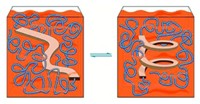Advertisement
Grab your lab coat. Let's get started
Welcome!
Welcome!
Create an account below to get 6 C&EN articles per month, receive newsletters and more - all free.
It seems this is your first time logging in online. Please enter the following information to continue.
As an ACS member you automatically get access to this site. All we need is few more details to create your reading experience.
Not you? Sign in with a different account.
Not you? Sign in with a different account.
ERROR 1
ERROR 1
ERROR 2
ERROR 2
ERROR 2
ERROR 2
ERROR 2
Password and Confirm password must match.
If you have an ACS member number, please enter it here so we can link this account to your membership. (optional)
ERROR 2
ACS values your privacy. By submitting your information, you are gaining access to C&EN and subscribing to our weekly newsletter. We use the information you provide to make your reading experience better, and we will never sell your data to third party members.
Physical Chemistry
Molecular Balances Measure Aliphatic CH-π Interactions
by Bethany Halford
August 8, 2011
| A version of this story appeared in
Volume 89, Issue 32
A family of conformationally flexible molecules gives chemists a means to measure the weak interactions between aliphatic C–H bonds and the delocalized π-electron systems of arenes in solution (Org. Lett., DOI: 10.1021/ol201657p). The so-called molecular balances, developed by Ken D. Shimizu and coworkers at the University of South Carolina, Columbia, are based on a bicyclic N-arylimide framework. When a balance molecule is in its folded position, an alkoxy group dangles over the molecule’s arene “shelf” so that an aliphatic C–H can interact with the arene. In its unfolded conformation, the arylimide C–N bond rotates so that the alkoxy group is positioned far away from the shelf. Using NMR to determine the ratio of the folded conformation to the unfolded one, Shimizu’s team was able to measure the strength of the aliphatic CH-π interaction. They found that the interaction is quite weak, about 1 kcal/mol relative to control balances lacking the arene shelf or with a simple aromatic shelf that’s not large enough to interact with the alkoxy group, and is easily disrupted by conformational entropy and repulsive steric interactions.





Join the conversation
Contact the reporter
Submit a Letter to the Editor for publication
Engage with us on Twitter